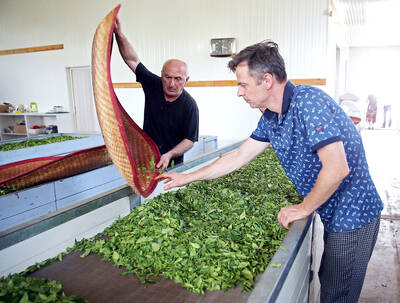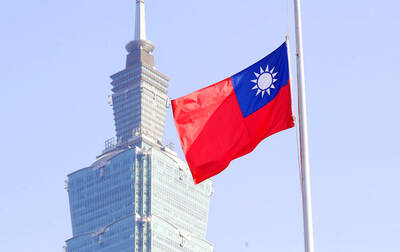The US economy sank at a 5.7 percent pace in the first quarter as the brute force of the recession carried over into this year. However, many analysts believe activity isn’t shrinking nearly as much now as the downturn flashes signs of letting up.
The US Commerce Department’s updated reading on GDP, released on Friday, showed the economy’s contraction from January to March was slightly less deep than the 6.1 percent annualized decline first estimated last month. But the new reading was a tad worse than the 5.5 percent annualized drop economists were forecasting.
It was a grim first-quarter performance despite the small upgrade. It marked the second straight quarter where the economy took a huge tumble. At the end of last year, the economy shrank at a staggering 6.3 percent pace, the most in a quarter-century.
.jpg)
Economists are hopeful that the economy wouldn’t shrink as much in the second quarter as the recession eases its grip.
Forecasters at the National Association for Business Economics, or NABE, predict the economy will contract at a 1.8 percent pace.Other analysts think the economic decline could be steeper — around a 3 percent pace. Some think it could be less — about a 1 percent pace.
“Things are getting less awful,” said Bill Cheney, chief economist at John Hancock Financial Services.
Less dramatic cuts by businesses factor into the expected improvement. Consumers, however, are likely to be cautious. There have been encouraging signs recently with gains in orders for big-ticket manufactured goods, some firming in home sales and a slowing in the pace of layoffs.
“The speed of the drop will slow,” predicted Ian Shepherdson, chief US economist at High Frequency Economics.
The government makes three estimates of the economy’s performance for any given quarter. Each estimate of GDP is based on more complete information. The third one will be released late next month.
US Federal Reserve Chairman Ben Bernanke and NABE forecasters say they expect the recession to end later this year, barring any fresh shocks to the economy. NABE forecasters predict the economy could start growing again in the third or fourth quarter.
US President Barack Obama’s stimulus package of increased government spending and tax cuts, along with aggressive action by the Fed to spur lending, should help revive the economy.
Still, both the Fed and private economists caution that any recovery will be lethargic and that unemployment — now at 8.9 percent, the highest in 25 years — will continue to march upward in the months ahead.

When Lika Megreladze was a child, life in her native western Georgian region of Guria revolved around tea. Her mother worked for decades as a scientist at the Soviet Union’s Institute of Tea and Subtropical Crops in the village of Anaseuli, Georgia, perfecting cultivation methods for a Georgian tea industry that supplied the bulk of the vast communist state’s brews. “When I was a child, this was only my mum’s workplace. Only later I realized that it was something big,” she said. Now, the institute lies abandoned. Yellowed papers are strewn around its decaying corridors, and a statue of Soviet founder Vladimir Lenin

ELECTRONICS BOOST: A predicted surge in exports would likely be driven by ICT products, exports of which have soared 84.7 percent from a year earlier, DBS said DBS Bank Ltd (星展銀行) yesterday raised its GDP growth forecast for Taiwan this year to 4 percent from 3 percent, citing robust demand for artificial intelligence (AI)-related exports and accelerated shipment activity, which are expected to offset potential headwinds from US tariffs. “Our GDP growth forecast for 2025 is revised up to 4 percent from 3 percent to reflect front-loaded exports and strong AI demand,” Singapore-based DBS senior economist Ma Tieying (馬鐵英) said in an online briefing. Taiwan’s second-quarter performance beat expectations, with GDP growth likely surpassing 5 percent, driven by a 34.1 percent year-on-year increase in exports, Ma said, citing government

UNIFYING OPPOSITION: Numerous companies have registered complaints over the potential levies, bringing together rival automakers in voicing their reservations US President Donald Trump is readying plans for industry-specific tariffs to kick in alongside his country-by-country duties in two weeks, ramping up his push to reshape the US’ standing in the global trading system by penalizing purchases from abroad. Administration officials could release details of Trump’s planned 50 percent duty on copper in the days before they are set to take effect on Friday next week, a person familiar with the matter said. That is the same date Trump’s “reciprocal” levies on products from more than 100 nations are slated to begin. Trump on Tuesday said that he is likely to impose tariffs

HELPING HAND: Approving the sale of H20s could give China the edge it needs to capture market share and become the global standard, a US representative said The US President Donald Trump administration’s decision allowing Nvidia Corp to resume shipments of its H20 artificial intelligence (AI) chips to China risks bolstering Beijing’s military capabilities and expanding its capacity to compete with the US, the head of the US House Select Committee on Strategic Competition Between the United States and the Chinese Communist Party said. “The H20, which is a cost-effective and powerful AI inference chip, far surpasses China’s indigenous capability and would therefore provide a substantial increase to China’s AI development,” committee chairman John Moolenaar, a Michigan Republican, said on Friday in a letter to US Secretary of